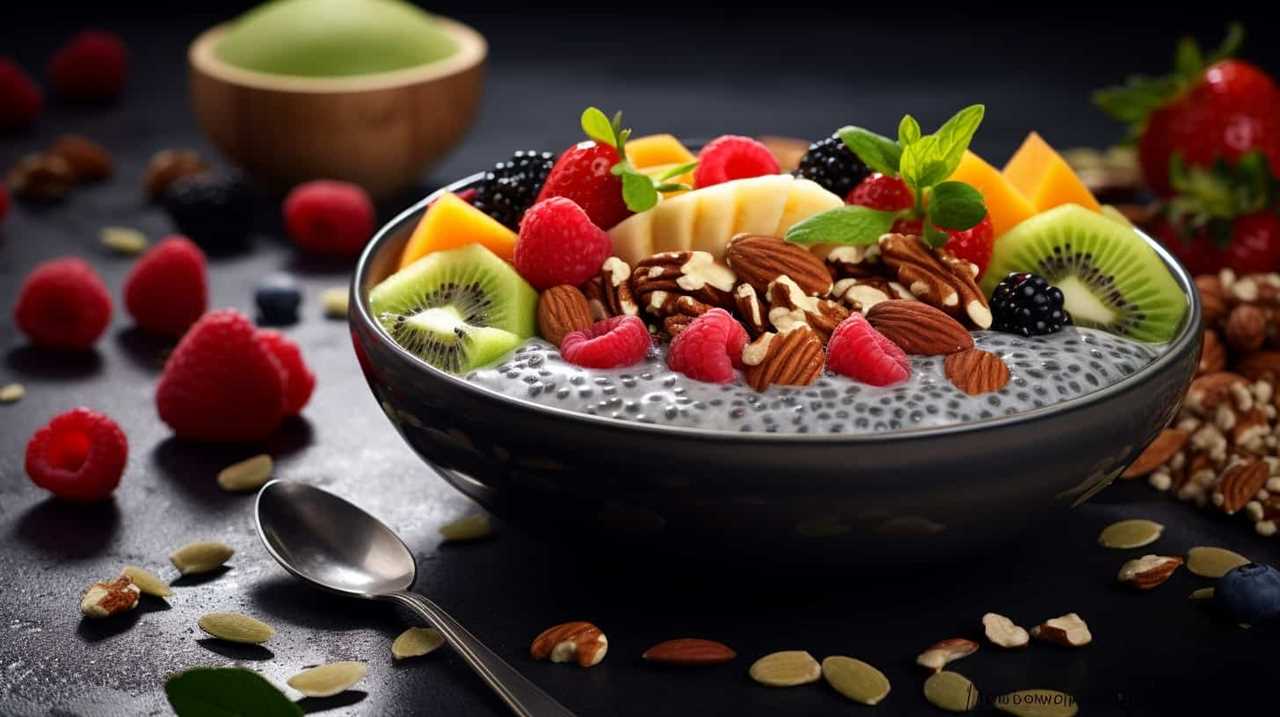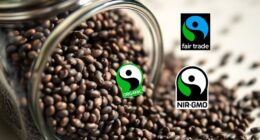In Aztec and Mayan diets, chia seeds were a essential food source deeply valued for their energy and nutritional power. They were often eaten raw, mixed with liquids, or ground into flour to boost meals. These seeds supported active lifestyles by providing lasting energy, hydration, and nourishment for warriors, laborers, and daily life. Their importance reflects ancient knowledge of superfoods—continue exploring to uncover more about their fascinating cultural role.
Key Takeaways
- Chia seeds were integral to Aztec and Mayan diets, valued for their energy and nutritional benefits.
- They were consumed raw, ground into flour, or mixed with liquids to create gel-like sustenance.
- Chia seeds supported physical endurance, helping warriors and laborers sustain energy during long activities.
- They played a role in rituals and daily life, reflecting their cultural and nutritional significance.
- Their use demonstrates ancient understanding of superfoods to promote health and resilience.

Chia seeds played an essential role in the diets of the Aztec and Mayan civilizations, serving as a rich source of energy and nutrition. These tiny seeds are considered one of the ancient superfoods, valued for their impressive nutritional profile and their importance in traditional nutrition practices. When you explore how these civilizations incorporated chia into their daily lives, you’ll see how they understood the importance of natural, nutrient-dense foods long before modern science highlighted their benefits.
Chia seeds were vital for Aztec and Mayan energy, nutrition, and traditional diets.
For the Aztecs and Mayans, chia seeds weren’t just a food; they were a crucial part of their cultural and sustenance practices. They often ate chia seeds in their raw form, mixing them with water or other liquids, creating a gel-like substance that provided sustained energy during long hunts or battles. This practice exemplifies their knowledge of traditional nutrition—using natural foods to enhance stamina and endurance. The seeds were also ground into flour or added to porridges, making them a versatile ingredient that could be incorporated into various meals. This adaptability highlights how ancient superfoods like chia played a central role in their diet, offering a concentrated source of fiber, healthy fats, and protein.
Chia’s popularity in these civilizations also stemmed from its ability to deliver lasting energy. The Aztecs, who relied heavily on warriors and laborers, recognized that chia seeds could help sustain their strength over extended periods of physical activity. Similarly, the Mayans used chia in their rituals and daily sustenance, appreciating its ability to provide hydration and nourishment. Their traditional nutrition strategies emphasized balance—combining chia with other ingredients like corn, beans, and chili to create well-rounded meals that supported their active lifestyles.
You can see that chia seeds were more than just a food source; they were a staple that supported their survival and cultural practices. Their use demonstrates an intuitive understanding of the benefits of ancient superfoods—natural, nutrient-rich foods that promote health and resilience. Today, modern nutrition continues to echo these ancient practices, recognizing chia as a superfood that can enhance your diet just as it did for the Aztecs and Mayans. By appreciating the role of chia in their traditional nutrition, you gain insight into how these ancient civilizations harnessed the power of nature’s superfoods to thrive in challenging environments.
Frequently Asked Questions
How Did Chia Seeds Influence Aztec and Mayan Religious Practices?
You see, chia seeds held deep religious symbolism for the Aztec and Mayan peoples, often used in ritual practices. They believed these seeds connected them to their gods and the universe. During ceremonies, you might have seen chia seeds incorporated into offerings or rituals, symbolizing life, fertility, and sustenance. Their significance went beyond nutrition, playing an essential role in spiritual and religious expressions.
Were Chia Seeds Used as Currency or Trade Items?
You might think chia seeds were used as currency, but actually, they held more symbolic value. In the chia seed trade, their significance was linked to chia seed symbolism, representing life, fertility, and abundance. While they weren’t used as currency, their cultural importance made them highly valued in rituals and exchanges, reflecting their spiritual and economic role in Aztec and Mayan societies.
What Other Plants Complemented Chia Seeds in Their Diets?
Imagine a vibrant tapestry, where each thread symbolizes a traditional plant pairing. You find that corn, beans, and squash—core ingredients—complement chia seeds perfectly as ancient grain combinations. These plants form the foundation of Aztec and Mayan diets, working together like a well-orchestrated symphony. Their rich flavors and nutrients intertwine, creating a balanced meal that sustains both body and spirit, honoring timeless culinary traditions.
How Did Climate Affect Chia Seed Cultivation Historically?
Climate played a significant role in chia seed cultivation historically, as their resilience to drought and variable weather made them ideal for the region’s conditions. You’d find that indigenous farmers used cultivation methods like water-efficient irrigation and selecting hardy plant varieties to guarantee good yields despite climate challenges. This climate resilience helped chia seeds sustain ancient civilizations, allowing cultivation to persist even during periods of environmental stress.
Are Chia Seeds Associated With Any Specific Aztec or Mayan Myths?
You’ll find that chia seeds are linked to mythical symbolism and ritual significance in Aztec and Mayan cultures. These seeds were revered as sacred gifts from gods, symbolizing fertility and life force. During ceremonies, they played a role in offerings and rituals, emphasizing their spiritual importance. Their connection to mythology underscores their value beyond nutrition, highlighting how deeply chia seeds were woven into religious and cultural practices.
Conclusion
By incorporating chia seeds into their diets, the Aztecs and Mayans boosted their energy and health. Imagine a Mayan farmer who fuels long workdays with chia’s nutrients, feeling more resilient and focused. Today, you can harness the same benefits by adding chia to your meals. Just like ancient civilizations thrived on this superfood, you too can enhance your well-being—connecting past wisdom with your modern lifestyle.








